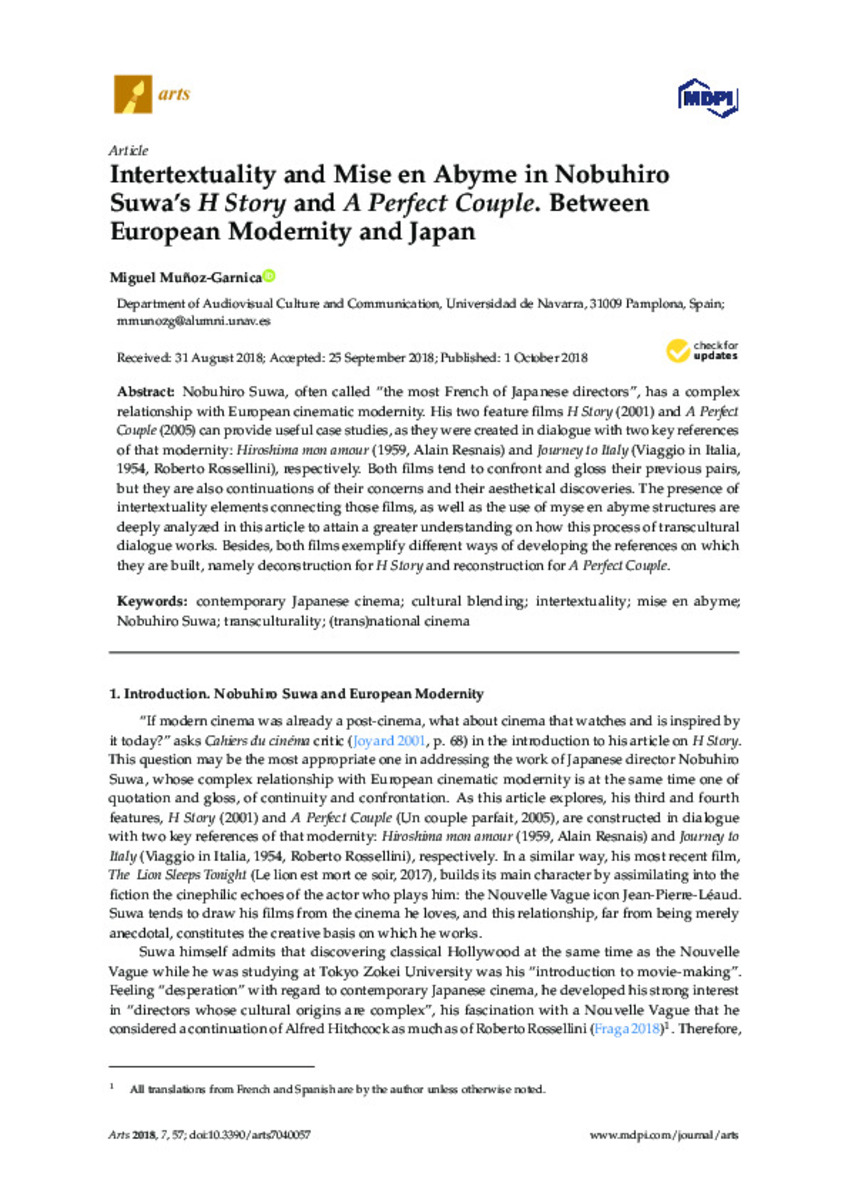Intertextuality and mise en abyme in Nobuhiro Suwa's H Story and A Perfect Couple. Between european modernity and Japan
Keywords:
Contemporary Japanese cinema
Cultural blending
Intertextuality
Mise en abyme
Nobuhiro Suwa
Transculturality
(Trans)national cinema
Note:
Licensee MDPI, Basel, Switzerland. This article is an open access article distributed under the terms and conditions of the Creative Commons Attribution (CC BY) license (http://creativecommons.org/licenses/by/4.0/).
Citation:
Muñoz-Garnica, M. (Miguel). "Intertextuality and mise en abyme in Nobuhiro Suwa's H Story and A Perfect Couple. Between european modernity and Japan". Arts. 7 (4), 2018, 57
Statistics and impact
0 citas en

0 citas en

Items in Dadun are protected by copyright, with all rights reserved, unless otherwise indicated.








